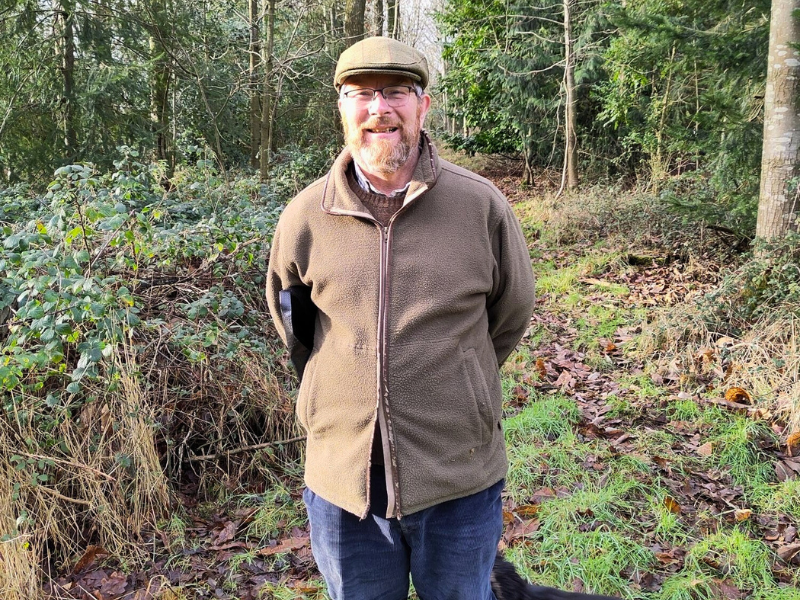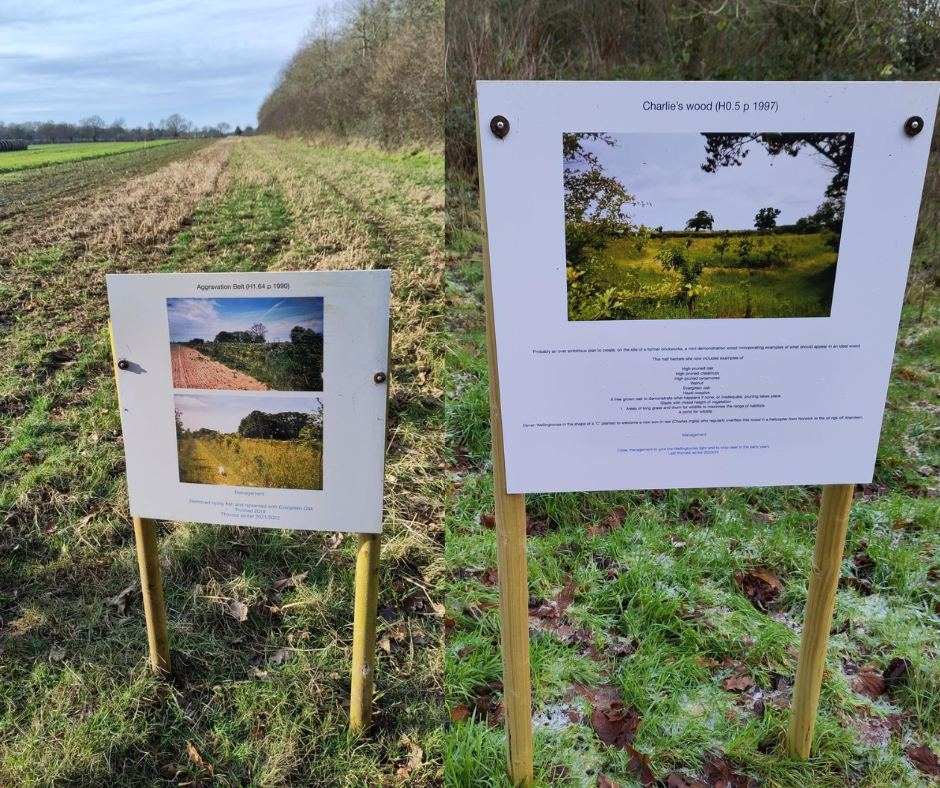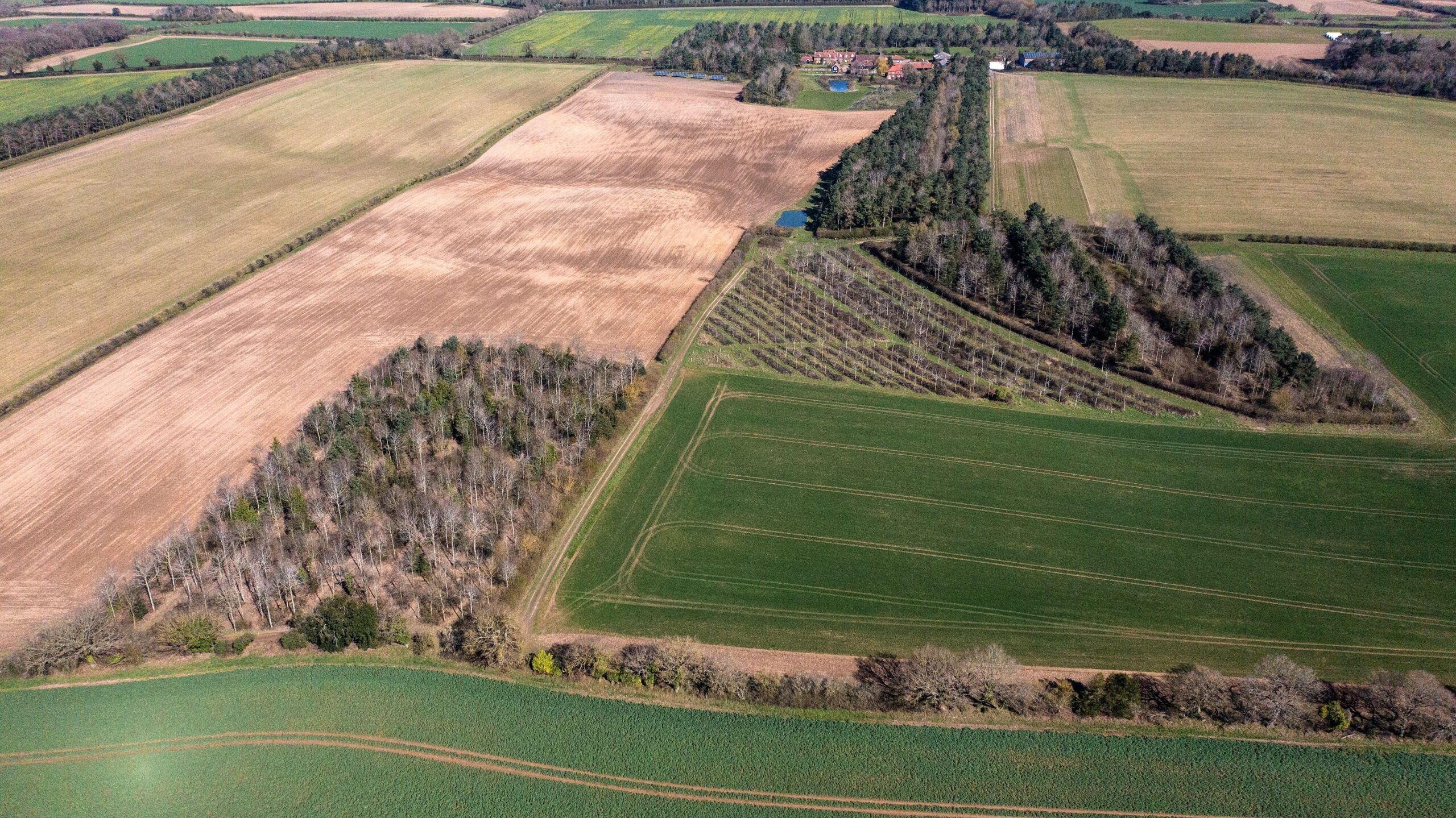Royal Forestry Society’s Excellence in Forestry Awards took place in October 2024. Since 2019, FSC UK has sponsored the Small & Farm Woodland of the Year award. This award recognises and rewards smaller woods which have been actively managed in the last ten years, and is aimed principally at the hands-on woodland owner, including farmers. Hole Farm, whose owner, Robin Carver sadly passed away earlier in 2024, won the gold award. Robin purchased the farm with his wife, Rose in 1982, but decades of farming large fields, removal of hedges and poor ploughing practice meant the land and soils were in a desolate condition.
To remedy the situation, Robin planted over 40,000 trees across 17 Ha, 10,000 shrubs and over 8 miles of hedges. The aim was to restore and safeguard the farmland and its soils. Thanks to ample energy, enthusiasm and a willingness to try new ideas, they transformed the landscape.
Last month, Karen met up with Charles Inglis, Robin’s son-in-law and successor, to find out more about Hole Farm, it's woodlands, and the family's future plans.

-
What makes the woodland so special for you and your family?
“The woodlands across the farm have transformed the land from an exposed, bleak arable landscape, reducing wind and water erosion of soils, improving and creating new habitats for wildlife, and making it better able to manage the changing climate.
As well as the RFS award, Hole Farm also won the Farming & Wildlife Advisory Group’s Silver Lapwing Award, which recognises farmers who go the extra mile to protect and enhance the land which they farm. The woodland planting was a large part of the reason for winning this award.”
-
What do you think Robin would say to winning the Small & Farm Woodland award?
“He would have been thrilled to win the award in recognition for all of the good work he has done in creating and managing the trees and woodlands which he loved. He would have treasured it. The trophy takes pride of place on the dining table, alongside the Lapwing award for all our guests to marvel at.”
-
What are your plans for the future and what do you hope the farm will look like in 2050?
“The family will continue to manage the woodlands to produce high quality trees, including coppicing chestnut. We’re aiming to expand the woodlands and hedgerows, experimenting with different trees, and finding new markets for the wood.
The aim is also to host farm open days, e.g. in collaboration with LEAF Marque. We would like to host more farm walks to show the community, other farmers and anyone interested in their work the woodlands and explain the numerous benefits they provide the farm.
We would like to see the woodlands grow and continue to be well-managed [in 2050], and for new woodlands and hedgerows to be planted. The farm will be under regenerative agriculture and wildlife will thrive whilst also ensuring the farm is financially viable.”

-
Do you feel the woodlands bring benefits to the wider farm?
“Wind and water erosion of soils has been greatly reduced as the site is in quite an exposed part of the country. Alongside their regenerative farming practices which they are moving towards, the soil is in better condition. One of the main benefits of the woodlands is to increase wildlife on the farm, from important pollinators to birds.”
-
What are the main barriers for farmers wishing to create more woodland and plant trees on their land?
“Cost is a large part of it, as it takes at least 20 years to see any payback, which is often too long for most farms to wait considering they are already under significant financial pressures and need to prioritise those aspects of the farm which bring money in in the short-term.
There are not many experienced advisors who can provide advice to farmers on introducing woodlands to their farms, and they can be expensive.
Uncertainty of what will happen to the farm in the long-term when the farmer retires or dies. If the farm is sold to pay inheritance tax, there are no guarantees that the woodlands will be managed or even retained.
Long-term funding is needed to manage the woodlands well, especially with the Basic Payment Scheme being removed.
If there are designated sites on the land (Hole farm has a SSSI), it can take years to obtain relevant permissions to undertake maintenance on the woodland to enhance or preserve it, which discourages good management.”
-
Can in-field trees and arable farming truly co-exist in a profit-making business?
"We have been considering agroforestry, but it needs careful planning and making sure that you have a market for the in-field tree crop, whether it be fruit, nuts or timber. I am sure if would be good for the soil and the environment if we could make it work.
We would also need to feel that we were on top of the deer population."
-
What advice would you give other farmers who wish to go down this route?
“There is a great amount of satisfaction in growing trees and creating woodlands. They create a better farm environment, and whilst it does take time for trees to grow, some native species do grow quickly so that you can see the benefits of your work in a relatively short time.”
-
Have you considered certifying your woodlands e.g. to FSC standards?
“Yes, but there would need to be an economic benefit. As the farm doesn’t really produce much timber, it would be something that they would have to consider carefully. Verified Impact sounds interesting, but it would have to benefit the farm.”
-
If you had to sum up the woodland in three words, what would they be?
“Joyful, useful, and fascinating.”
Charles’ final comment was “no matter how much you know about woodlands, you never stop learning!”

Enter the Excellence in Forestry Awards 2025
The EIF Awards rotate annually around five regions across England, Wales and Northern Ireland. In 2025, the Awards will be for entrants from South West England, defined as the counties covered by the RFS Divisions: Gloucestershire, Herefordshire, Somerset & Dorset, South Western and Worcestershire. The competition closes 30 April. Winners will be announced at the EIF Awards Ceremony on 25 September 2025.

